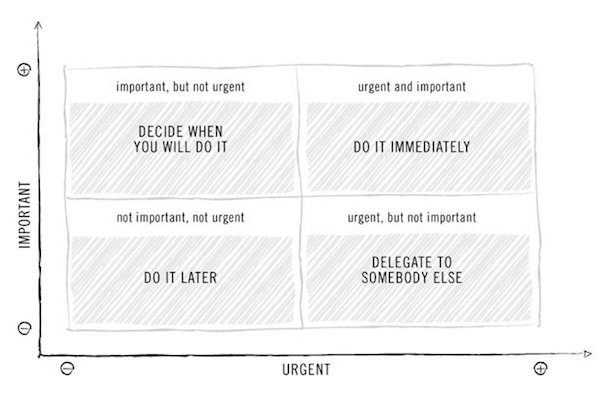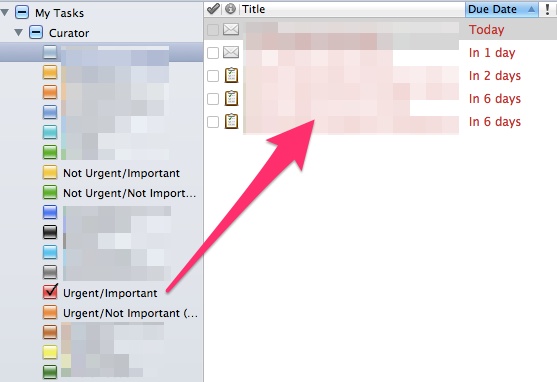How The Eisenhower Matrix And Outlook Can Make You More Productive
 You may have heard some variation of Pres. Dwight Eisenhower's productivity matrix: "What is important is seldom urgent, and what is urgent is seldom important." Who knows if he actually said that, but also, who cares? It's a good saying, and it can work well if you're struggling to get a handle on your tasks and time.
You may have heard some variation of Pres. Dwight Eisenhower's productivity matrix: "What is important is seldom urgent, and what is urgent is seldom important." Who knows if he actually said that, but also, who cares? It's a good saying, and it can work well if you're struggling to get a handle on your tasks and time.
Here it is illustrated (credit: Business Insider):
My Outlook task list at the beginning of every day is usually about 7-8 hours long, and that's before things start getting added to it. If I'm going to avoid a 10-hour day, or at least try to prevent it, I have to be diligent about prioritizing those tasks.
Recently, I applied Eisenhower's productivity matrix to my task list. Almost immediately it made things easier, because there was suddenly no debating what needed to be handled in what order. I go about my day by tackling the urgent/important stuff first, the not-urgent/important stuff next, and then pushing everything else to another time or another person. (Note: I still organize tasks by client; this just acts as a second layer.)
This works perfectly with Outlook's task manager, because I can hide everything but what's urgent/important, or not-urgent/important, etc.:
Besides helping me maintain productivity, this has also cut out a lot of stress. It's such a relief sometimes to look at a task list 20 items long and be able to go, "OK, this can be done tomorrow; this can be delegated; this doesn't need action till next week...." The Eisenhower matrix can whittle that 20-item list down to the 5-7 most important things in a hurry.


